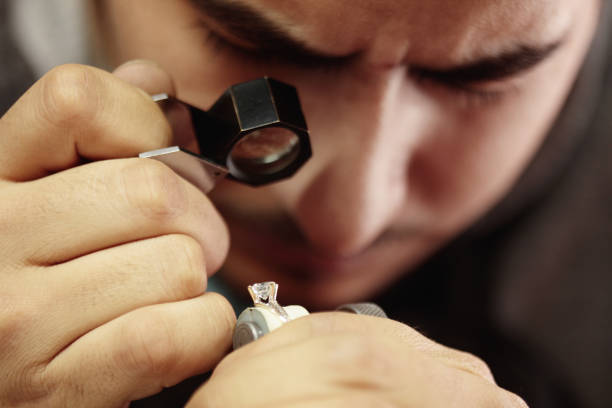Demystifying the Mohs Scale for Measuring Gem Hardness All Entries

One of the most important factors in identifying a mineral is its hardness, which corresponds with its resistance to scratching by another object. Hardness also indicates the strength of a gemstone's mass. The Mohs Scale is a measurement system developed by Friedrich Mohs in 1812. The scale is based on the German scientist's selection of ten minerals of different hardness as references for comparisons.
Why Hardness Matters
Determining the hardness of a gemstone helps jewelry buyers and sellers confirm its mineral type, quality and value. A diamond is the hardest mineral on the planet, so on the Mohs scale of 1-10, it's rated 10. Some of the minerals that approach this hardness are corundum at 9 and topaz at 8. On the softer end of the scale, talc has a hardness of 1, gypsum is 2 and calcite is 3.
Hardness of a mineral is an indication of how strong the atoms are bonded together as well as the size of the atoms. It plays a role in distinguishing a diamond from something that looks similar like moissanite, which is typically colorless. Despite the similar appearance and crystalline structure, moissanite has a hardness of 9.25, making it softer than a diamond.
There are other subtle differences, but hardness is a definitive distinction. Since there are big differences in pricing between the two gems, it's important to use the Mohs Scale for confirmation. Other gems that might be confused with diamonds until given a scratch test include white topaz, white zircon, white sapphire and white quartz.
Hardness Differences Between Diamonds and Lookalikes
Moissanite is still an interesting gem to explore, as it was discovered in 1893 by Dr. Henri Moissan, who later won a Nobel Prize in chemistry. The mineral, made of silicon carbide, came from outer space when a meteorite landed in Arizona's Canyon Diablo desert, creating what is now called "Meteor Crater." Other than this location, pure moissanite is very rare on Earth.
The mineral was named after its discoverer, as suggested by Tiffany & Co. in 1905. Since then the mineral has been produced in labs to enhance its fire and brilliance. Moissanite entered mass production as a diamond alternative in 1998, after it was patented by jewelry manufacturer Charles & Colvard. Since then the patent has expired and other companies have marketed produced versions. So the natural version of this diamond-like mineral is rare on Earth, while its synthetic counterpart is abundant.
As for other gems that can be mistaken as diamonds, sapphire has a hardness of 9 on the Mohs scale, topaz is 8, zircon is 7.5 and quartz is 7.
Mohs Scale Scatch Tests for Hardness
Jewelers use scratch tests with the Mohs Scale as a guide for determining hardness. The surface of one specimen is brushed against the surface of another. If specimen A produces a scratch mark on specimen B, then A is harder than B. When specimens have equal hardness, they will be unable to scratch the other in a noticeable way.
This test is useful when comparing a known reference specimen with an unknown specimen. It's essential to conduct the test more than once to confirm the results.
Conclusion
The Mohs Scale is an effective tool for jewelers and gemologists to determine a mineral's identity and hardness. Contact us at Ralph Mueller & Associates for more information on the Mohs Scale. We can help you learn additional details about the quality and value of your gems.